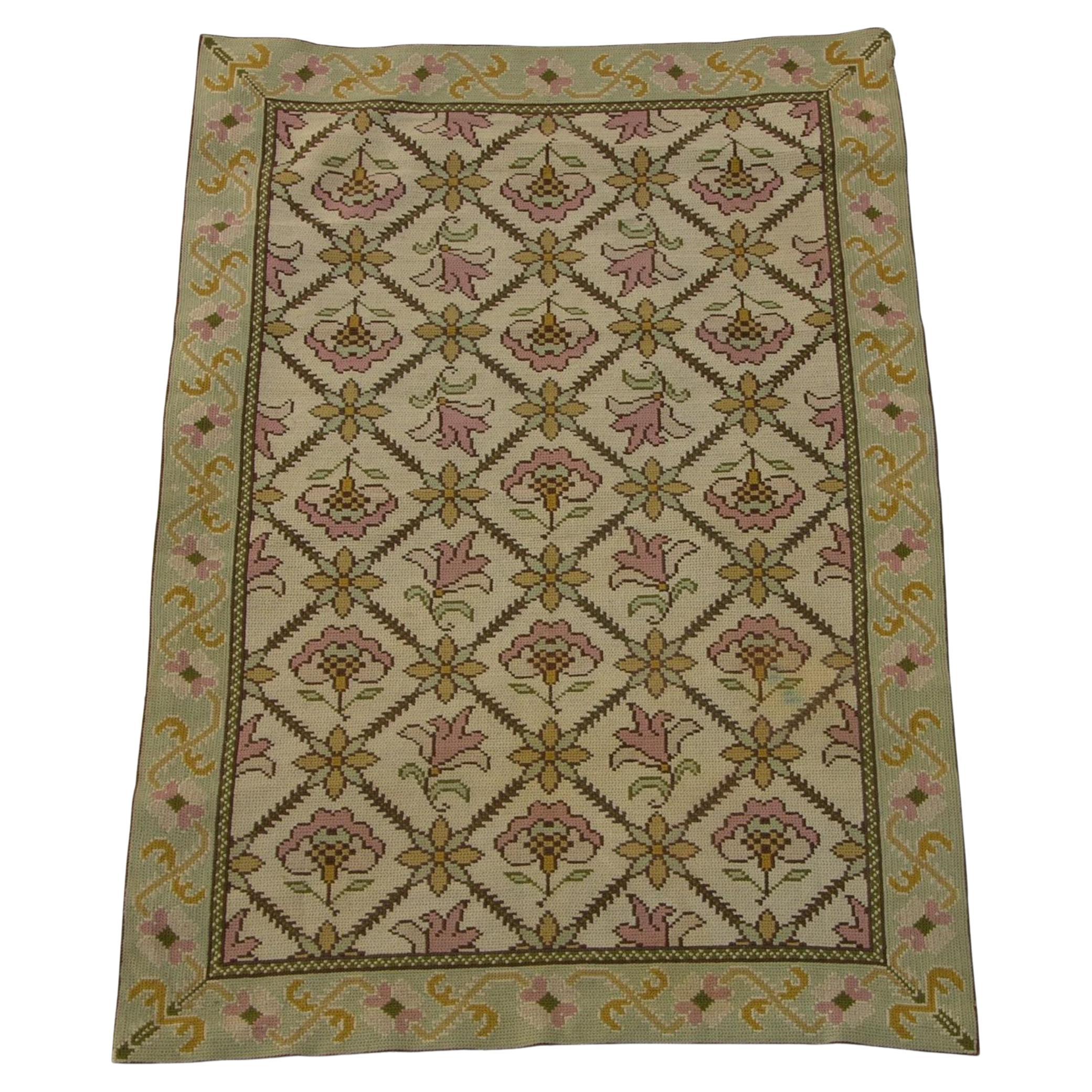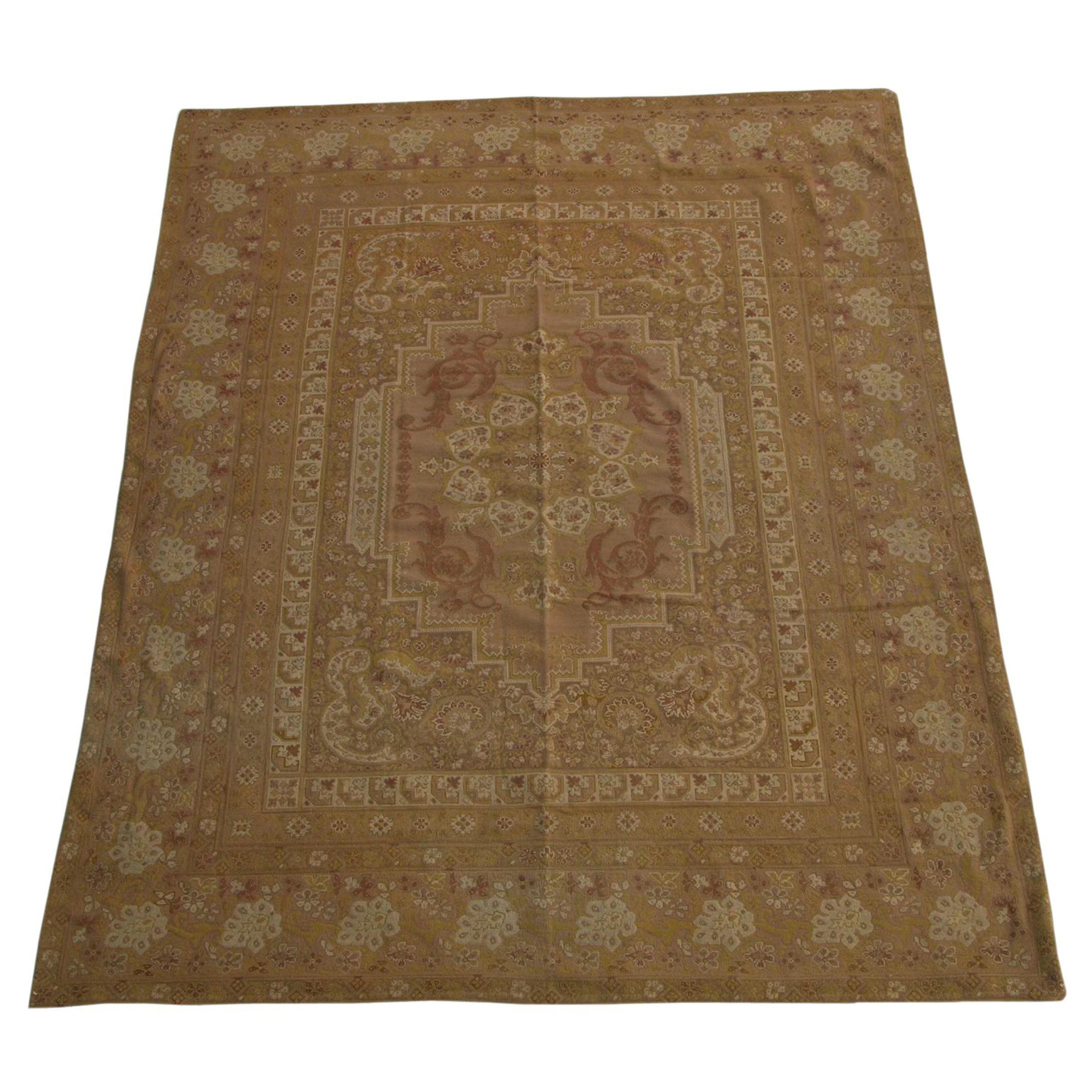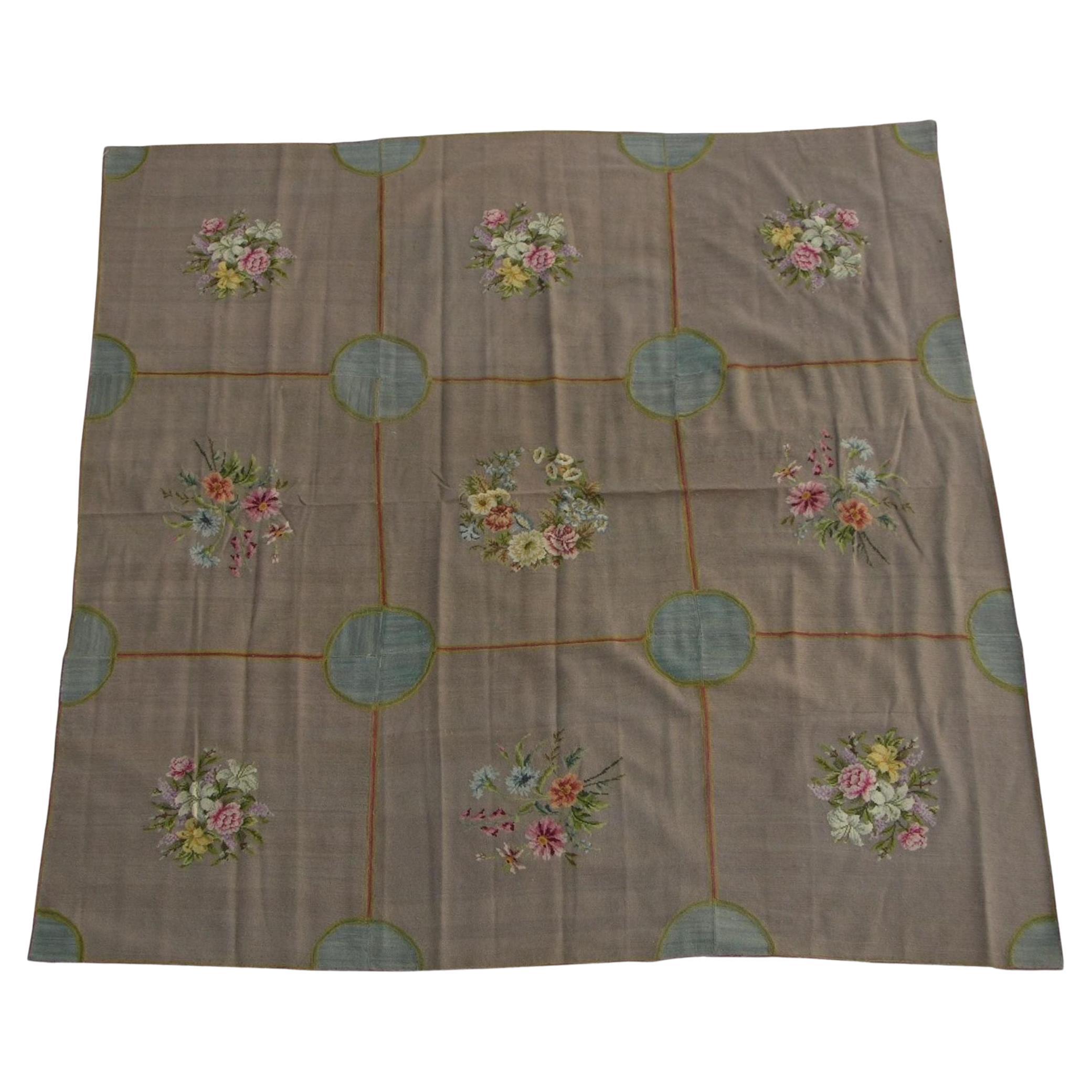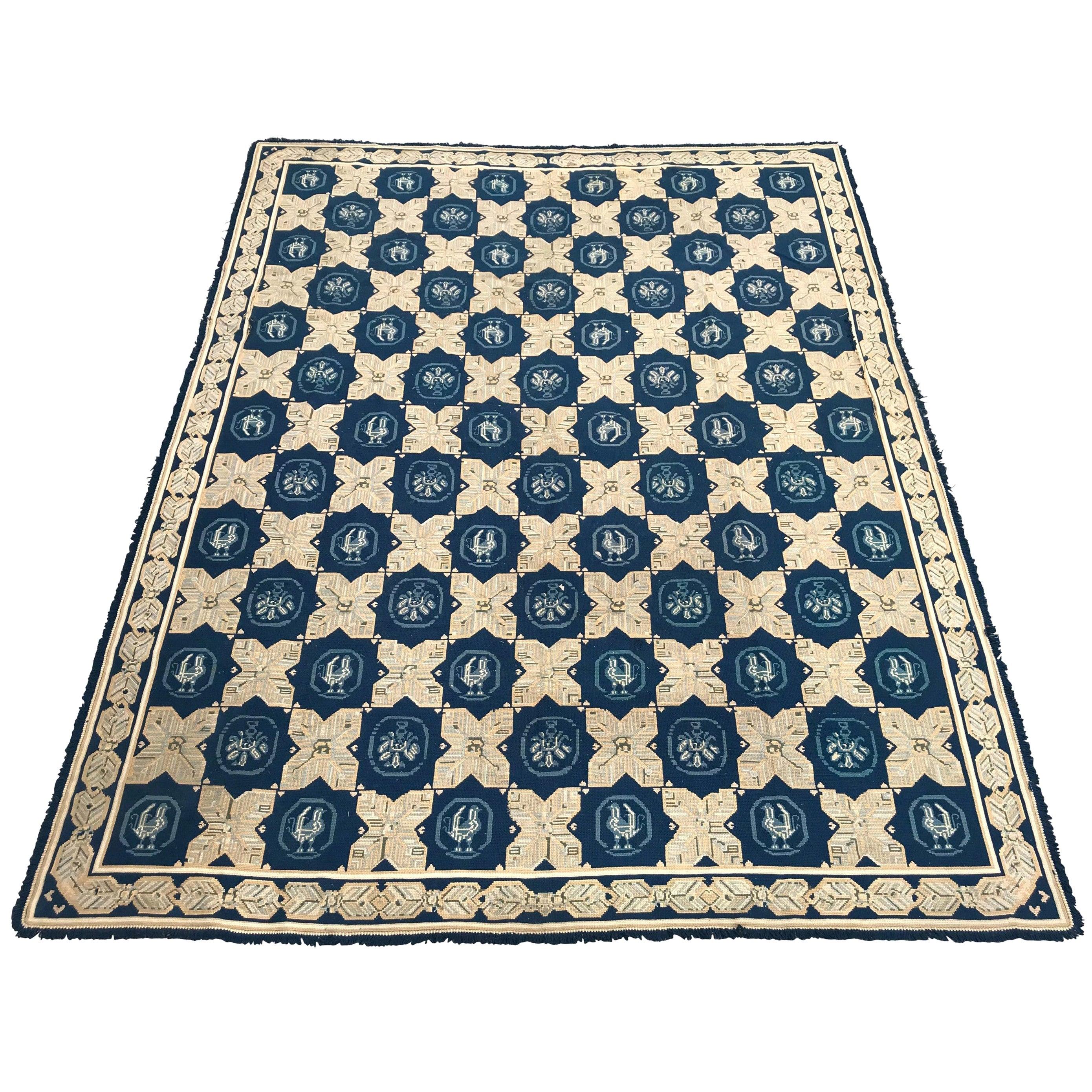Items Similar to Antique European Needlepoint Rug 2'1" x 4'4"
Want more images or videos?
Request additional images or videos from the seller
1 of 7
Antique European Needlepoint Rug 2'1" x 4'4"
About the Item
Antique European needlepoint rug, size: 2'1" x 4'4".
- Dimensions:Width: 25 in (63.5 cm)Length: 52 in (132.08 cm)
- Materials and Techniques:Wool,Needlepoint
- Place of Origin:
- Period:
- Date of Manufacture:1880
- Condition:Minor fading.
- Seller Location:New York, NY
- Reference Number:
About the Seller
4.8
Platinum Seller
These expertly vetted sellers are 1stDibs' most experienced sellers and are rated highest by our customers.
Established in 1995
1stDibs seller since 2019
344 sales on 1stDibs
Typical response time: <1 hour
- ShippingRetrieving quote...Ships From: New York, NY
- Return PolicyA return for this item may be initiated within 3 days of delivery.
More From This SellerView All
- Antique European Needlepoint Rug 4' 8" x 5' 6"Located in New York, NYAntique European needlepoint rug, size: 4'8" x 5'6".Category
Antique 1890s English Western European Rugs
MaterialsWool
- Antique European Needlepoint RugLocated in New York, NYAntique European needlepoint rug, Size: 4'0"x6'0".Category
Vintage 1980s Chinese Western European Rugs
MaterialsWool
- Antique European Needlepoint Rug 8' 8" x 10' 5"Located in New York, NYAntique European needlepoint rug, Size: 8'8" x 10'5".Category
Antique 1860s English Western European Rugs
MaterialsWool
- Antique European Needlepoint Rug 8' 2" x 10' 3"Located in New York, NYAntique European needlepoint rug, size: 8'2" x 10'3".Category
Vintage 1920s English Western European Rugs
MaterialsWool
- Antique European Needlepoint Rug 3'2" x 6'8"Located in New York, NYAntique European needlepoint rug, size: 3'2" x 6'8".Category
Antique 1750s Portuguese Western European Rugs
MaterialsWool
- Antique European Needlepoint Rug 12'8" x 14'0"Located in New York, NYAntique European needlepoint rug, size: 12'8" x 14'0".Category
Antique 1850s English Western European Rugs
MaterialsWool
You May Also Like
- Antique Ukrainian Needlepoint RugLocated in New York, NYAn antique Ukrainian needlepoint carpet from the second quarter of the 20th century. A medallion of elegant floral blossoms sits atop a brown minimalistic background confined by a gr...Category
Vintage 1930s Ukrainian Arts and Crafts Russian and Scandinavian Rugs
MaterialsWool
- Antique Needlepoint Floral RugLocated in Los Angeles, USNeedlepoint rugs were created using the traditional needlework weaving technique that is used to make everyday items from furniture to carpets and artwork. However, it has a fascinat...Category
Antique Early 1900s Other Russian and Scandinavian Rugs
MaterialsWool, Cotton
- 1900s Antique Decorative Khotan Samarkand Rug-6'2'' X 4'4''Located in Los Angeles, USUp for sale is a 1900s Antique Decorative Khotan Samarkand Rug. This rug is made of wool on a cotton foundation. It is tribal and traditionalCategory
Antique Early 1900s Asian Empire Russian and Scandinavian Rugs
MaterialsWool, Cotton
- 1900s Antique French Needlepoint RugLocated in Los Angeles, USNeedlepoint rugs were created using the traditional needlework weaving technique that is used to make everyday items from furniture to carpets and artwork. However, it has a fascinating history both as a hobby and as an industry. When many people think of carpets, they think of pile carpets or flat weave kilims, but needlepoint has also been used to create beautiful carpets. These carpets are durable and an important part of carpet history. Archaeologists and scholars consider the roots of needlepoint to have been around 1500 BC. They consider the first needlepoint to include the fine diagonal stitches that were used to sew tents together by the ancient Egyptians. The art eventually evolved into tapestry weaving. However, a tapestry weaving differs significantly from needlepoint in that it uses a loom and vertical warp. Tapestry weaving is closer to the weaving of kilims and pile rugs than canvas work. However, some still include tapestry weaving in the category of needlepoint because of the fine work that appeared during the late Renaissance. It can have a similar appearance to the untrained eye. Technically, tapestry weaving and needlepoint are not the same, and they do not use the same technique. The first actual needlepoint rugs and needle-points began to appear in the late Renaissance. Needlepoint is worked by creating stitches on a stiff canvas. The canvas is typically made from jute or linen and is quite durable. Pieces from the Renaissance were used to cover footstools, chairs, pillows, bed headboards, and other furnishings. They were also used as table coverings and wall coverings. You could also find them on many small items such as purses, shoes, and various adornments for clothing. During the Renaissance, the craft reached a high level of skill, and the designs became incredibly detailed and realistic. They mimicked many of the subjects and styles of famous paintings of the time. They created florals, still life designs, scenes, and geometric tiled pieces. Some of them mimicked the designs found in Persian Carpets. Needlepoint reached its peak popularity in the 19th century when it was considered a proper occupation for a lady. Needlepoint and embroidery held a similar place in societal status at the time. During this time, the work became finer, with some of the canvas reaching a high level of detail. The level of detail is determined by counting the number of mesh in an inch. During this time petit point by French needlewomen could have a mesh count as high as 45 mesh. This allowed women to create highly intricate designs with incredible levels of detail. It is possible to find many antique pieces of needlepoint besides rugs. Needlepoint rugs were popular in France and Spain, where the technique was adapted to create highly intricate designs that mimicked the designs in architecture and fashion. They were popular because they were durable, and it could be fashioned into a variety of items. The canvases themselves were durable, and the wool that they used was also strong, which means that many of the pieces were able to withstand daily use. We have many artifacts that have survived from this time period. Needlepoint rugs are important collectibles because they are different from the pile rugs and kilims that are typically found on the market. Needlepoint carpets are special because they take many hours to create, especially larger works. Needlepoint pieces of any type became popular throughout Europe during the 19th century. It is still a popular hobby today, but perhaps one of the most interesting stories is that of the Portuguese needlewomen of Arraiolos. The story of these women and their beautiful carpets begins in 1492. Needlepoint was a popular occupation in Spain, which had a large population of Moors and Jews. They were an integral part of Spanish culture. However, in 1492, Queen Isabella of Spain issued a proclamation that gave these ethnic groups the order to pack their bags and board ships headed...Category
Antique Early 1900s Other Russian and Scandinavian Rugs
MaterialsWool, Cotton
- 1920s Antique Needlepoint Rug - 6'7'' X 6'5''Located in Los Angeles, USNeedlepoint rugs were created using the traditional needlework weaving technique that is used to make everyday items from furniture to carpets and artwork. However, it has a fascinating history both as a hobby and as an industry. When many people think of carpets, they think of pile carpets or flat weave kilims, but needlepoint has also been used to create beautiful carpets. These carpets are durable and an important part of carpet history. Archaeologists and scholars consider the roots of needlepoint to have been around 1500 BC. They consider the first needlepoint to include the fine diagonal stitches that were used to sew tents together by the ancient Egyptians. The art eventually evolved into tapestry weaving. However, a tapestry weaving differs significantly from needlepoint in that it uses a loom and vertical warp. Tapestry weaving is closer to the weaving of kilims and pile rugs than canvas work. However, some still include tapestry weaving in the category of needlepoint because of the fine work that appeared during the late Renaissance. It can have a similar appearance to the untrained eye. Technically, tapestry weaving and needlepoint are not the same, and they do not use the same technique. The first actual needlepoint rugs and needle-points began to appear in the late Renaissance. Needlepoint is worked by creating stitches on a stiff canvas. The canvas is typically made from jute or linen and is quite durable. Pieces from the Renaissance were used to cover footstools, chairs, pillows, bed headboards, and other furnishings. They were also used as table coverings and wall coverings. You could also find them on many small items such as purses, shoes, and various adornments for clothing. During the Renaissance, the craft reached a high level of skill, and the designs became incredibly detailed and realistic. They mimicked many of the subjects and styles of famous paintings of the time. They created florals, still life designs, scenes, and geometric tiled pieces. Some of them mimicked the designs found in Persian Carpets. Needlepoint reached its peak popularity in the 19th century when it was considered a proper occupation for a lady. Needlepoint and embroidery held a similar place in societal status at the time. During this time, the work became finer, with some of the canvas reaching a high level of detail. The level of detail is determined by counting the number of mesh in an inch. During this time petit point by French needlewomen could have a mesh count as high as 45 mesh. This allowed women to create highly intricate designs with incredible levels of detail. It is possible to find many antique pieces of needlepoint besides rugs. Needlepoint rugs were popular in France and Spain, where the technique was adapted to create highly intricate designs that mimicked the designs in architecture and fashion. They were popular because they were durable, and it could be fashioned into a variety of items. The canvases themselves were durable, and the wool that they used was also strong, which means that many of the pieces were able to withstand daily use. We have many artifacts that have survived from this time period. Needlepoint rugs are important collectibles because they are different from the pile rugs and kilims that are typically found on the market. Needlepoint carpets are special because they take many hours to create, especially larger works. Needlepoint pieces of any type became popular throughout Europe during the 19th century. It is still a popular hobby today, but perhaps one of the most interesting stories is that of the Portuguese needlewomen of Arraiolos. The story of these women and their beautiful carpets begins in 1492. Needlepoint was a popular occupation in Spain, which had a large population of Moors and Jews. They were an integral part of Spanish culture. However, in 1492, Queen Isabella of Spain issued a proclamation that gave these ethnic groups the order to pack their bags and board ships headed...Category
Vintage 1920s Other Russian and Scandinavian Rugs
MaterialsWool
- Bobyrug’s Wonderful Large Antique Flat Portuguese Arraiolos Needlepoint RugLocated in Saint Ouen, FRDiscover the elegance of our early 20th-century Portuguese needlepoint Arraiolas rug. Adorned with a captivating geometrical Victorian design in soothing blue and beige hues, this ex...Category
Early 20th Century Portuguese Victorian Western European Rugs
MaterialsHemp, Cotton, Wool
Recently Viewed
View AllMore Ways To Browse
Antique Russia
Antique Russian
Russian Antique
Russian Antique Russian
Antique Russian Furniture
Antique Needlepoints
Antique Needlepoint
Antique Needlepoint Needlepoint
Needlepoint Rug
Antique Russian Rugs
Antique Russian Rug
Antique Needlepoint Carpet
Needlepoint Rug Room Size
Antique Needlepoint Rug
Antique Needlepoint Rugs
Antique European Needlepoint
Antique European Needlepoint Rug
Retro Swedish Rug





